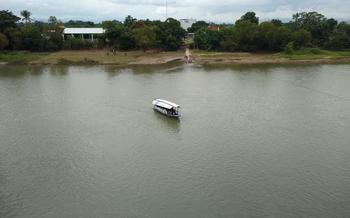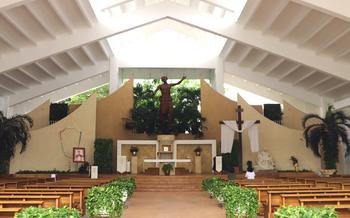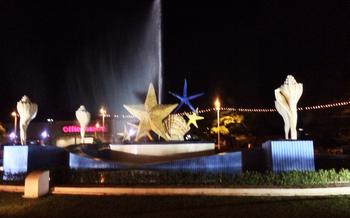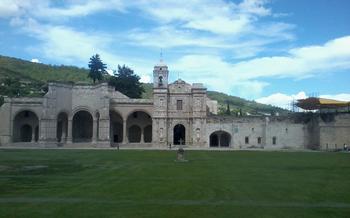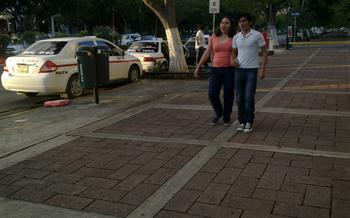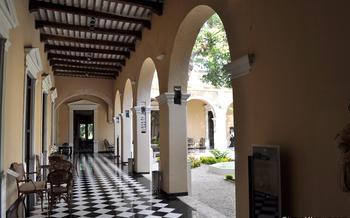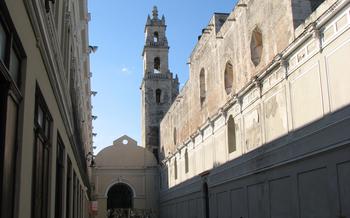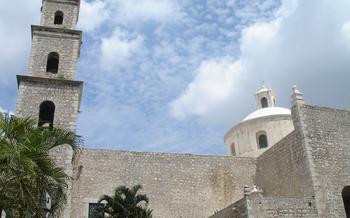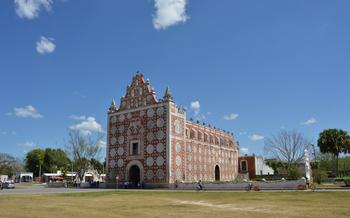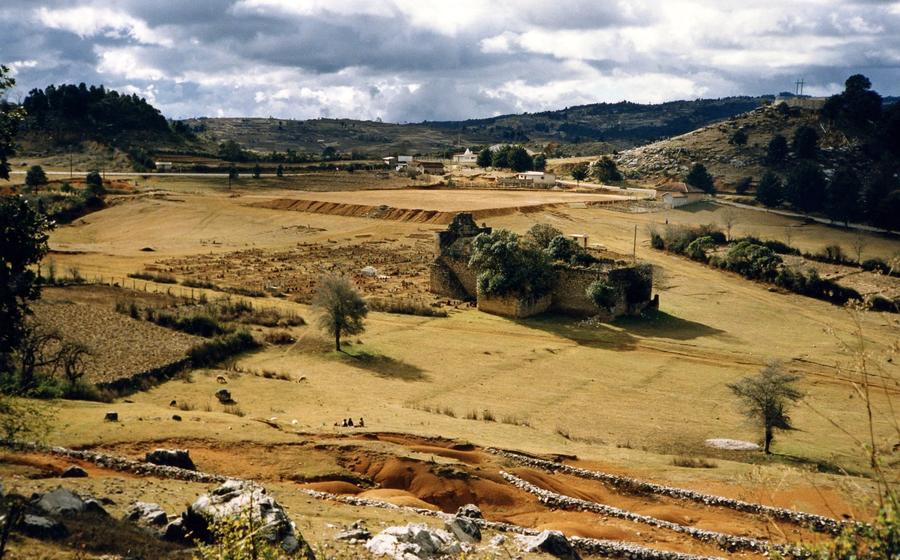
San Juan Chamula
- San Juan Chamula
- The Church of San Juan Bautista
- Shamanic Healing Ceremonies
- The Process of a Healing Ceremony
- Beliefs and Practices During the Ceremony
- Finding a Reputable Shaman
- The Local Handicrafts Market
- Visiting the Surrounding Villages
- Local Cuisine and Restaurants
- The Annual Fiestas of San Juan Chamula
- Accommodation Options in San Juan Chamula
- Safety and Precautions for Visitors
- Best Time to Visit San Juan Chamula
- Photography and Videography Regulations
- Language and Communication
- Environmental and Sustainable Tourism
- Insider Tip: Unveiling the Hidden Gems of San Juan Chamula
San Juan Chamula
Nestled amidst the lush landscapes of the spirituality, and cultural resilience. With a history dating back to pre-Columbian times, this vibrant town has preserved its unique identity and customs despite the passage of time. Located approximately 60 kilometers northeast of San Cristobal de las Casas, San Juan Chamula is easily accessible by public transportation or private vehicles. As you approach the town, the air becomes thick with the scent of copal incense, signaling your entry into a realm where ancient beliefs and modern practices intertwine. Prepare to be captivated by the sights, sounds, and experiences that await you in this extraordinary corner of Mexico.
The Church of San Juan Bautista
Amidst the cobblestone streets of San town's rich cultural heritage. Its imposing facade, adorned with intricate carvings and vibrant colors, hints at the unique experiences that await visitors within its sacred walls.
Inside the church, a symphony of colors and textures unfolds, captivating the senses. Murals and paintings, rendered in a style that blends Catholicism with Mayan iconography, cover every inch of the walls and ceiling. These artworks depict biblical scenes, Mayan deities, and the daily life of the Chamula people, narrating a visual history of the town's syncretic beliefs.
The fusion of Catholicism and Mayan traditions is evident in the church's rituals and ceremonies. The use of incense and candles, the rhythmic chanting of prayers in the Tzotzil language, and the presence of shamans performing healing ceremonies create an atmosphere that is both sacred and mystical.
Shamanic Healing Ceremonies
In the heart of San Juan Chamula, the ancient tradition of shamanic healing ceremonies thrives. For centuries, the Tzotzil Mayans have sought guidance and solace from these ceremonies, which blend indigenous beliefs with Catholic rituals.
The Process of a Healing Ceremony
A healing ceremony typically begins with the patient entering a dimly lit room, its air thick with the scent of incense and candles. The shaman, or curandero, welcomes the patient and invites them to sit on a woven mat. Through prayer and offerings, the shaman establishes a connection with the patient's spiritual realm.
Beliefs and Practices During the Ceremony
During the ceremony, the shaman uses various tools and techniques to diagnose and address the patient's ailments. They may employ candles to represent the patient's energy, eggs to absorb negative energy, and herbs to promote healing. The shaman chants prayers in the Tzotzil language, invoking ancient spirits and deities for assistance.
Finding a Reputable Shaman
Finding a reputable shaman is crucial for a meaningful and safe experience. Ask for recommendations from locals or seek guidance from reputable tour operators. It's important to approach these ceremonies with respect and an open mind, as they are deeply rooted in the local culture and traditions.
The Local Handicrafts Market
San Juan Chamula is renowned for its vibrant and colorful handicrafts market, located in the heart of the town's main square. As you stroll through the market, you'll be greeted by a symphony of colors and textures, as vendors proudly display their handwoven textiles, intricately carved wooden figures, and an array of other traditional crafts.
Handicrafts and Souvenirs:
-
Textiles: Marvel at the vibrant handwoven textiles, including traditional blouses, skirts, and shawls, each adorned with unique patterns and embroidered designs that reflect the town's rich cultural heritage.
-
Wood Carvings: Discover intricately carved wooden masks, animals, and religious figures, crafted from local woods and showcasing the exceptional skills of the local artisans.
-
Pottery: Browse beautifully crafted pottery pieces, from simple clay pots to elaborately decorated vases and sculptures, each telling a story of traditional Mayan craftsmanship.
-
Jewelry: Find a treasure trove of handmade jewelry, including necklaces, bracelets, and earrings adorned with colorful beads, precious stones, and silver or gold accents.
Significance of the Market:
-
Economic Hub: The market serves as an important economic hub for the community, providing a livelihood for local artisans and contributing to the preservation of traditional crafts.
-
Cultural Exchange: The market is a place where visitors can interact with the local people, learn about their culture, and gain insights into their way of life.
Tips for Bargaining and Buying:
-
Be Respectful: Remember that bargaining is a part of the local culture, but always approach vendors with respect and politeness.
-
Set a Budget: Before you start shopping, establish a budget to help you stay within your limits and avoid overspending.
-
Ask Questions: Don't hesitate to ask vendors about the materials, techniques, and cultural significance of their products.
-
Support Local Artisans: By purchasing directly from the artisans, you're contributing to the preservation of traditional crafts and supporting the local economy.
Visiting the Surrounding Villages
San Juan Chamula is surrounded by other captivating villages that offer unique experiences and insights into the local culture. These villages, steeped in tradition and history, provide a glimpse into the lives of the Tzotzil Maya people.
San Pedro Chenalhó: A picturesque village located just 8 kilometers from San Juan Chamula, San Pedro Chenalhó is renowned for its charming rustic houses and vibrant street art. Visitors can explore the village's main square, visit the colorful church, and admire the awe-inspiring murals that adorn its walls.
Aldama: Located approximately 20 kilometers from San Juan Chamula, Aldama is a village known for its impressive textile market. Every Sunday, the streets of Aldama come alive with vendors selling an array of traditional textiles, including intricately woven blouses, skirts, and shawls. Visitors can witness the artisans demonstrating their weaving skills and purchase unique handmade souvenirs.
Larráinzar: Nestled in the heart of the Chiapas Highlands, Larráinzar is a village that has managed to preserve its indigenous customs and traditions. Visitors can immerse themselves in the local culture by visiting the traditional Tzotzil Maya market, where they can find an abundance of fresh produce, traditional clothing, and handcrafted goods.
Getting There: Exploring the surrounding villages is easy and convenient. Visitors can rent a car or hire a taxi from San Juan Chamula. Public transportation options, such as buses or colectivos, are also available, providing a more immersive and authentic experience.
Things to See and Do: Each village offers unique attractions and activities. In San Pedro Chenalhó, stroll through the village, admire the street art, and visit the main square and church. In Aldama, delve into the textile market, witness the weaving demonstrations, and shop for traditional handicrafts. In Larráinzar, explore the traditional market, immerse yourself in the Tzotzil Maya culture, and learn about their customs and traditions.
Local Cuisine and Restaurants
Savor the Exquisite Flavors of Traditional Chamula Cuisine
San Juan Chamula takes pride in its culinary traditions, showcasing a diverse range of dishes that reflect the town's unique cultural heritage. Indulge in the tantalizing flavors of pox, a traditional corn-based alcoholic beverage, and tascal, a delicious stew made with tender lamb or pork and a variety of spices. Try the local specialty, chicha, a refreshing fermented beverage made from corn, or sample the flavors of tamales, corn dumplings filled with savory fillings.
Popular Restaurants and Eateries in San Juan Chamula
For an authentic dining experience, immerse yourself in the bustling atmosphere of local restaurants and eateries. Savor the delights of traditional Chamula cuisine at Restaurante El Fogón de Doña María, known for its mouthwatering tascal and tamales. Enjoy the warm hospitality and delicious flavors at Comedor San Juan, a family-run establishment serving up hearty local dishes.
Tips for Finding Authentic Local Food
To truly embrace the culinary delights of San Juan Chamula, venture beyond the main tourist areas and seek out the hidden gems where locals dine. Ask your hotel or tour guide for recommendations, and don't be afraid to explore the narrow streets and mercados, where you'll find small eateries serving up authentic and affordable local fare. Indulge your taste buds and savor the diverse flavors that make Chamula's cuisine a culinary journey to remember.
The Annual Fiestas of San Juan Chamula
Experience the Vibrant together in an explosion of color, music, and traditions. The main fiesta takes place on June 24th**, coinciding with the saint's feast day.
During this time, the town transforms into a vibrant hub of activity. Locals don their finest traditional attire, and the streets are adorned with colorful decorations. The air is filled with the enchanting sounds of music, as local musicians and dancers perform traditional tunes and dances.
One of the highlights of the fiesta is the procession of San Juan Bautista, which takes place on the evening of June 23rd. The statue of the saint is carried through the streets, followed by a throng of devotees carrying candles and incense. The procession is a testament to the deep devotion of the people of San Juan Chamula to their patron saint.
The fiestas also feature a variety of traditional rituals and ceremonies, including the "k'exol che'nal" or the "raising of the tree." This ritual involves cutting down a tree from the nearby mountains and planting it in the town square. The tree symbolizes the strength and resilience of the community.
If you happen to be in San Juan Chamula during the annual fiestas, be prepared for an unforgettable experience. Immerse yourself in the vibrant atmosphere, witness the unique traditions, and join the locals in celebrating the spirit of their patron saint.
Accommodation Options in San Juan Chamula
When planning your stay in San Juan Chamula, various accommodation options cater to different budgets and preferences. For a truly immersive experience, consider homestays with local families, offering a glimpse into the traditional lifestyle and culture. These homestays provide basic amenities and meals, allowing you to interact with the locals and learn about their customs.
Small guesthouses and posadas are another charming option, often run by families or small businesses. These guesthouses provide cozy rooms with basic amenities and a warm, homely atmosphere. They often serve traditional breakfasts and can arrange tours and activities in the area.
For those seeking more comfort and amenities, hotels and resorts are available in nearby towns and cities like San Cristóbal de las Casas. These hotels offer a range of room categories, modern amenities, and sometimes even spa facilities or swimming pools. They can serve as a base for exploring San Juan Chamula and the surrounding region.
When choosing accommodation, it's essential to book in advance, especially during peak tourist seasons. It's also advisable to check the reviews and recommendations of previous guests to ensure a positive experience.
Safety and Precautions for Visitors
San Juan Chamula is a generally safe place to visit, but it's essential to be aware of certain safety precautions and cultural sensitivities.
-
Respect Local Customs: Dress modestly and avoid disruptive behavior to show respect for the local culture and traditions.
-
Be Mindful of Photography: Ask permission before taking photos of local people or religious ceremonies. Photography restrictions may apply in certain areas.
-
Beware of Scams: Be cautious of individuals offering unsolicited services or goods. Avoid carrying large amounts of cash and keep your belongings close.
-
Respect Religious Beliefs: Refrain from making disrespectful remarks or gestures towards the local religious practices and beliefs.
-
Stay Alert: Be aware of your surroundings, especially in crowded areas. Keep your valuables secure and avoid walking alone at night.
-
Support Local Guides: Consider hiring a local guide to navigate the town and provide insights into the local culture and traditions.
-
Learn Basic Spanish: While not essential, learning a few basic Spanish phrases can enhance your interactions with the locals.
Best Time to Visit San Juan Chamula
The climate in San Juan Chamula is generally mild throughout the year, with average temperatures ranging from 15 to 25 degrees Celsius. However, the town experiences two distinct seasons: the dry season from November to April and the rainy season from May to October.
The dry season is the ideal time to visit San Juan Chamula. During this period, the weather is mostly sunny and dry, making it perfect for exploring the town and its surroundings. The skies are clear, providing breathtaking views of the mountains and valleys. The annual Fiestas of San Juan Chamula, a vibrant celebration of local culture and traditions, also take place during the dry season.
The rainy season, while still a good time to visit San Juan Chamula, can pose some challenges. The town receives heavy rainfall during this period, which can make the roads muddy and slippery. Some outdoor activities, such as hiking and mountain biking, may be limited due to the wet conditions. However, the lush greenery and vibrant flowers that bloom during the rainy season offer a unique and beautiful experience.
For those who want to experience the Fiestas of San Juan Chamula, it is important to plan your visit accordingly. The festivities typically take place in late January or early February, and the exact dates vary from year to year. During this time, the town comes alive with music, dance, and traditional rituals. Visitors can immerse themselves in the local culture and witness the unique blend of Catholicism and Mayan beliefs.
Overall, the best time to visit San Juan Chamula depends on your preferences and interests. If you want to avoid the rain and enjoy outdoor activities, plan your trip during the dry season. If you are interested in experiencing the Fiestas of San Juan Chamula, aim to visit during late January or early February. No matter when you choose to visit, San Juan Chamula offers a rich and unforgettable experience for travelers seeking cultural immersion and spiritual exploration.
Photography and Videography Regulations
In San Juan Chamula, photography and videography are generally permitted, but there are certain rules and etiquette that visitors must respect. Inside the church, photography and videography are strictly prohibited as a sign of reverence for the sacred space. Taking photos of the local people, especially during rituals and ceremonies, requires their permission and consent. It is important to ask politely and respect their wishes if they decline.
While exploring the town and the surrounding areas, visitors should be mindful of their surroundings and avoid taking photos or videos that may be intrusive or disrespectful. Using a telephoto lens or zoom function is advisable to maintain a distance and minimize disruption. Additionally, visitors should refrain from photographing or filming religious ceremonies or rituals without the express permission of the participants.
By following these guidelines, visitors can respectfully capture the beauty and essence of San Juan Chamula while honoring the privacy and customs of the local community.
Language and Communication
In San Juan Chamula, the primary language spoken is Tzotzil, a Mayan language. While some residents may understand Spanish, it's not widely spoken in the community. To enhance your experience and communicate effectively with the locals, consider hiring a guide or translator. A guide can provide insights into the town's history, traditions, and cultural nuances, while also facilitating communication with the local people.
If you're comfortable navigating language barriers, a few basic Spanish phrases can be helpful. Greetings like "Buenos días" (Good morning) and "Buenas tardes" (Good afternoon) are always appreciated. When asking for directions or information, try phrases like "Cómo llego a la iglesia?" (How do I get to the church?) or "Dónde puedo encontrar un restaurante?" (Where can I find a restaurant?).
Remember that the locals might not be fluent in Spanish either, so be patient and respectful when communicating. A genuine smile and a willingness to connect can go a long way in bridging the language gap.
Environmental and Sustainable Tourism
San Juan Chamula is a special place, and it is essential to be mindful of your impact on the environment when visiting. Responsible tourism is about preserving the cultural and natural heritage of the town for future generations to enjoy. Here are some tips for minimizing your environmental footprint:
- Reduce your waste by bringing your own reusable water bottle, shopping bags, and containers for leftovers.
- Be respectful of the local culture by avoiding activities that may be disruptive or disrespectful, such as loud noises or public displays of affection.
- Support local businesses by eating at local restaurants, shopping at local markets, and staying in locally-owned hotels or guesthouses.
- Learn about the local culture by visiting the museums, attending cultural events, and talking to the locals.
- Help protect the environment by volunteering your time to clean up the streets or plant trees.
By following these tips, you can help to ensure that San Juan Chamula remains a beautiful and welcoming place for years to come.
Insider Tip: Unveiling the Hidden Gems of San Juan Chamula
For an exclusive and immersive experience in San Juan Chamula, venture off the beaten path to uncover the hidden gems that await. One such treasure is the Cerro del Maíz, a sacred hill located just outside the town. Hike up to the summit to witness breathtaking panoramic views of the surrounding mountains and valleys. At the peak, you'll find ancient Mayan ruins and a small shrine where locals come to pray and make offerings.
Another hidden gem is the Mercado de Artesanías (Handicraft Market) in the neighboring village of San Pedro Chenalho. This vibrant market offers a diverse array of traditional crafts, including intricate textiles, colorful pottery, and hand-carved wooden masks. Engage with the local artisans, learn about their techniques, and find unique souvenirs to cherish.
For an authentic culinary experience, visit the Comedor La Bendición in San Juan Chamula. This humble eatery serves delicious traditional dishes prepared with fresh, local ingredients. Sample the mole chamula, a rich and flavorful sauce made with chiles, spices, and chocolate, accompanied by handmade tortillas.
Remember to approach these hidden gems with respect and cultural sensitivity. Ask permission before taking photos, and be mindful of local customs and traditions. Your willingness to engage with the community and immerse yourself in their way of life will create a truly unforgettable experience.
